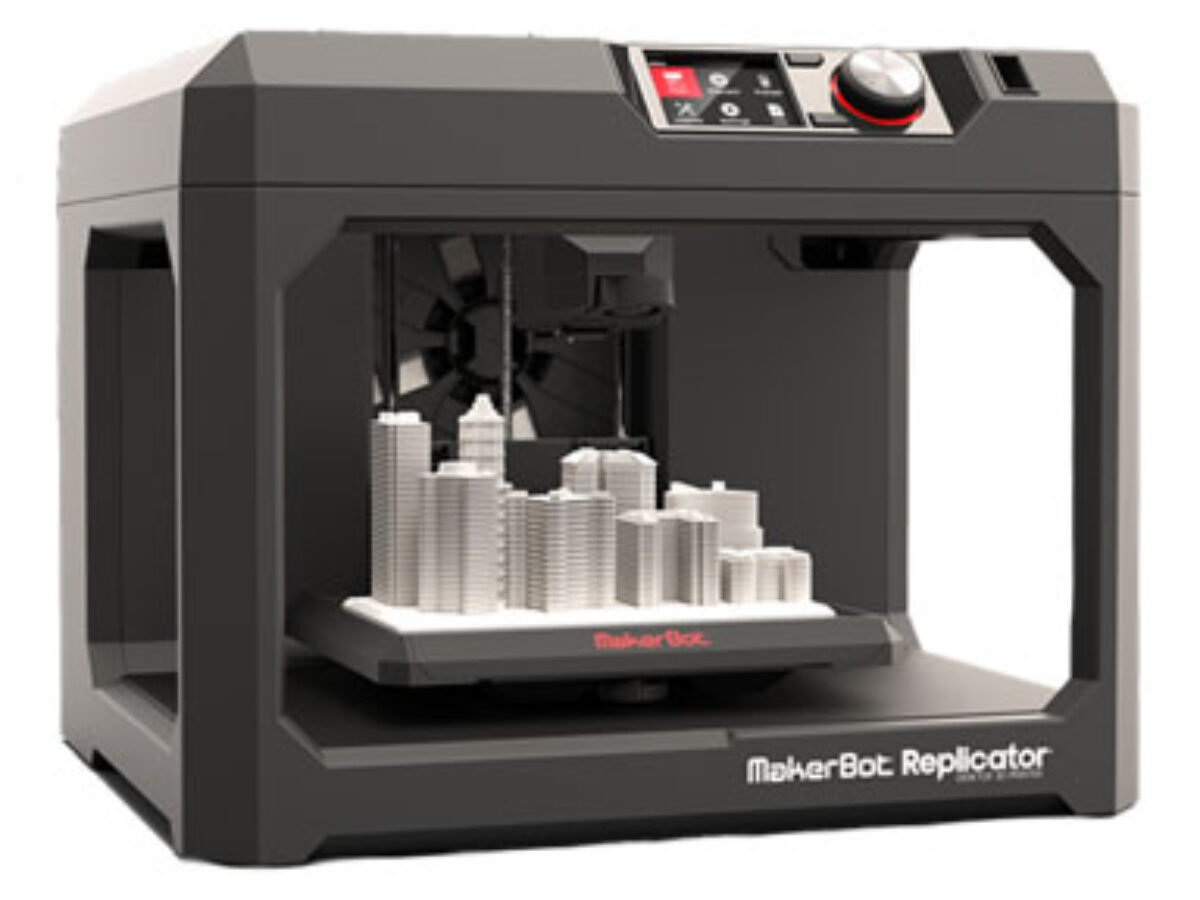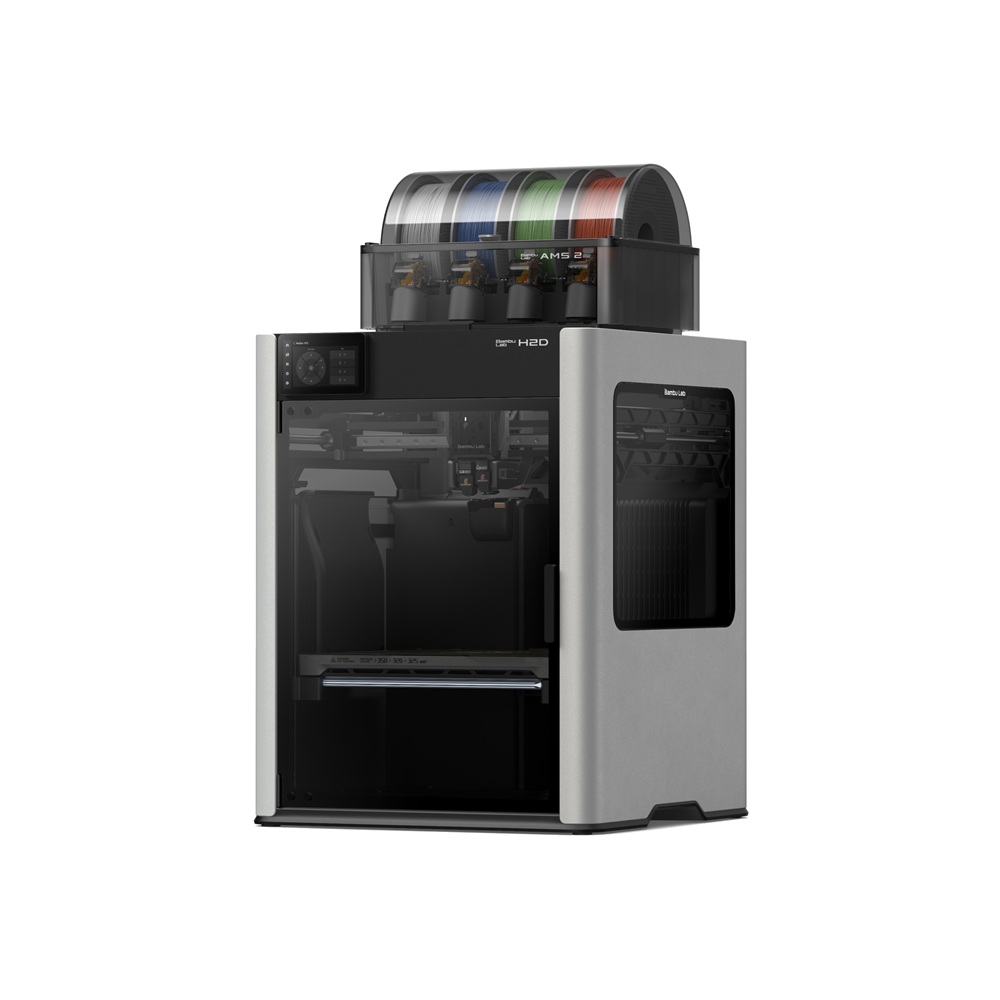Compare Replicator Plus vs H2D
Comparison between the best 3D printers
Choose the best 3D printer at the best price. The cheapest 3D printers are here.
Buy a 3D printer here with 3D Fila.
 |
 |
|
| Model | Replicator Plus |
H2D |
| Printing Material | Filament | Filament |
| Buy Filament for Makerbot Replicator Plus | Buy Filament forBambu Lab H2D | |
| Estimated price | $2099,00 | $1899,00 |
| Manufacturer | Makerbot | Bambu Lab |
| Release Year | 2016 | 2025 |
| Print Volume [mm] | 165x295x195 | 350x320x325 |
| Printer Size [mm] | 410x528x441 | 492x514x626 |
| Weight [kg] | 18,3 | 42,3 |
| Power Loss Recovery | YES | YES |
| Enclosed printer | NO | YES |
| Bed Leveling | Automatic | Automatic |
| Filament End Sensor | YES | YES |
| Bed type | Heated | |
| Power supply system | Bowden | Direct Drive |
| Standard nozzle | 0,4 | 0,4 |
| Maximum Nozzle Temperature [°C] | 230 | 350 |
| Maximum Bed Temperature [°C] | 120 | |
| Maximum printing speed [mm/s] | 150 | 600 |
| Filament holder | YES | YES |
| Camera for supervision | YES | YES |
| Recommended filaments | PLA | PLA, PETG, ABS, ASA, TPU, PVA, Nylon (PA) |
| Recommended slicers | MakerBot Print Software | Bambu Studio |
| Maximum Resolution [mm] | 0,1 | 0,01 |
| Processor | ||
| Display | Touchscreen 5'' | |
| Power Supply | 110/220V / 240W | |
| Connectivity | USB / Wi-Fi | Wifi, Bambu bus, Cartão SD |
| Operating systems | Windows, Mac, Linux | Windows, Mac, Linux |
| Date of registration in the system | 2022-11-15 | 2025-03-31 |
| Release date | 2016 | 2025 |
| Extra features | The Replicator Plus printer is easy to use and has very good print quality. Its software is user-friendly and powerful, with USB, Ethernet, Wi-Fi and support for printing via pen drive. With a safe design for an open frame printer, it is relatively quiet. The Smart Extruder+ detects filament end and pauses printing automatically, in addition to notifying via apps. It has a large print volume, with a non-heated and coated print bed for easy removal of parts. It also has a webcam for remote monitoring of prints. | Bambu Labs H2D combines high-speed 3D printing with a chamber heated up to 65 °C, dual extrusion with automatic nozzle switching, an AMS for filament drying and exchange, and AI sensors that detect failures. It offers optional laser and digital cutting capabilities, features intelligent calibration through computer vision, vibration control, enhanced fire safety, and real-time camera monitoring. |
| Support for multiple colors and materials (AMS and CFS) | NO | YES |
Notes * |
||
| Cost-benefit | 6 / 10 | 7 / 10 |
| Hardware | 2.5 / 10 | 8 / 10 |
| Tela | . | . |
| Print volume | 3 / 10 | 4 / 10 |
| Performance | 1 / 10 | 5 / 10 |
Conclusion |
| In comparing the Makerbot Replicator Plus and the Bambu Lab H2D, several key factors stand out that can guide potential buyers in making an informed decision. **Price and Value**: The Replicator Plus, being slightly more expensive, may be seen as a less favorable cost-benefit option compared to the H2D, which offers a better score in this regard. This suggests that the H2D provides more value considering its lower price while still delivering advanced features. **Technology and Features**: The H2D introduces a range of modern technologies, including dual extrusion capabilities and AI-driven features like intelligent calibration and failure detection. In contrast, the Replicator Plus, although user-friendly and effective for basic printing tasks, lacks such advanced capabilities and is limited to recommended materials. The H2D’s wider compatibility with different filament types, including Nylon and TPU, enhances its versatility and appeal for more experienced users. **Print Capacity and Speed**: The H2D significantly surpasses the Replicator Plus in print volume and maximum speed, allowing for larger and faster print outputs. This feature is particularly advantageous for those needing to produce high-quality prints in a timely manner. **Build and Design**: While the Replicator Plus has a smaller footprint and is relatively lightweight, the H2D's fully enclosed design may provide better temperature control and safety, making it a more suitable choice for extended printing sessions or for environments where safety is a concern. **User Experience and Software**: Both printers offer automatic bed leveling and filament sensors, but the Replicator Plus is noted for its user-friendly interface and design, which caters well to beginners. The H2D, on the other hand, is optimized for those who require higher performance and are willing to engage with more complex features. **Conclusion**: Ultimately, the choice between the Replicator Plus and the H2D hinges on the user's needs. For novices or those prioritizing ease of use and desktop 3D printing, the Replicator Plus presents itself as a solid option. However, for users seeking advanced features, higher performance, and better long-term value, the Bambu Lab H2D is clearly the superior choice. The advancements in technology, combined with its enhanced capabilities, make it a worthwhile investment for serious 3D printing enthusiasts. |

